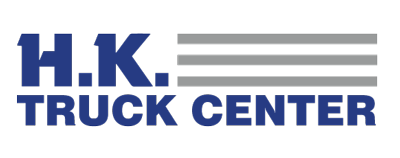
Current Supply Chain Threats Create Ongoing Problems for Fleets
Ukraine grain shipments threatened by Putin; potential strikes by UPS workers, work slowdowns and stoppages at docks; EU regulation on deforestation commodities. These are among the many issues challenging the supply chain. But they are far from the only ones. Although things may be better than they were (as far as shortages) during and immediately after the worst of the pandemic, they are far from optimal.
The trucking industry is particularly vulnerable when it comes to supply chain disruption. And that’s really problematic since truck fleets are the backbone of supply chains, ensuring that goods reach their destination efficiently and on time. But in addition to the challenges stated above which may see resolution, the supply chain and trucking face a number of long-term problems.
Cybersecurity threats – Today’s logistics rely heavily on technology. Fleets equipped with GPS tracking, electronic logging devices, and other interconnected systems, are vulnerable to cyberattacks. These attacks can compromise the integrity of data, disrupt communications, or even gain unauthorized control over vehicles. A cyber breach could lead to significant delays, theft of sensitive information, and the worst-case scenario, result in accidents and loss of life. To combat this, fleets need to deploy ongoing cybersecurity measures, including regular updates to software and continual employee training.
Driver shortages – This problem never seems to subside, evidenced by the numerous blogs I’ve posted on this ongoing threat to the industry. The American Trucking Associations (ATA) estimates that the 2023 shortage of truck drivers will be approximately 64,000. That number is expected to more than double by 2031. The shortages impact the fleet but they also impact the current drivers themselves, requiring them to adhere to longer delivery times while still complying with HOS regulations. This stressful situation is tough for anyone but with so many truck drivers approaching retirement age, many are simply either retiring or turning to less stressful occupations. Fleets really need to up their retention programs as well as improve their recruitment strategies. They also need to invest in training programs (especially with the uptick in EVs).
Infrastructure challenges – It’s impressive that the I-95 road collapse in Philadelphia was handled so quickly (even though it is a temporary fix), but that’s not usually the case. Our industry has been complaining about the state of our highways, roads, and bridges for decades and we are happy to see projects will finally be undertaken. That’s the good news. The bad news is that, while repairs are going on, traffic congestion and detours will increase, challenging fleets to meet delivery deadlines. Truck parking has also been an issue and we are glad to see that serious discussions are underway, Just this past month, two new federal grants were awarded to expand parking in heavily trafficked freight corridors in Louisiana and Texas.
Fuel price volatility – Fluctuations in diesel prices significantly impact trucking companies’ profitability at a time where it’s already difficult to make a profit. It also complicates the ability for fleets to accurately predict cash flow and available working capital since fuel is a major cost center impacting finances overall and whether it goes up or down will change a company’s cash situation. EVs and alternative fuels are still more of a future solution especially for the heavy-duty truck sector, so fleets now need to focus on implementing effective fuel management strategies like reduced idling and better route mapping.
Climate events – For those throughout North America and Europe who are either baking in unrelenting heat, breathing in smoke caused by fires, or losing everything to floods and tornadoes, the changing climate is a clear and present threat. It’s not only the discomfort to people; heat buckles roads and floods overtake them which leads to road closures and rerouting challenges. Fleets need to have contingency plans and disaster preparedness strategies to mitigate the possible damage.
An uncertain world – Geopolitically, tensions have rarely been higher. Right now, we are witnessing the concerns regarding Putin’s promised embargo on Ukraine grain which will create new shortages, mostly affecting developing countries. Actions like this have far-reaching effects on the supply chain. Whether it’s changes in trade policies, tariffs, and/or political instability, companies need to deal with rising costs, plan for shifts in shipping routes and more. This will lead to increased transportation costs for companies and in the end for customers as well. One way to mitigate the issue is for procurement to widen their roster of suppliers. Diversifying supply chain sources and having adaptable transportation strategies can help fleets during times of global upheaval.
The fact is, in today’s interconnected world, a smooth-functioning supply chain is essential not just in order to ensure consumers receive their ordered products, but also because a robust supply chain is vital for economic stability.
About Jane Clark
Jane Clark is Vice President of Member Services for NationaLease. Before joining the full service truck leasing organization, she served in executive positions with some of the nation’s top staffing and recruitment agencies.




